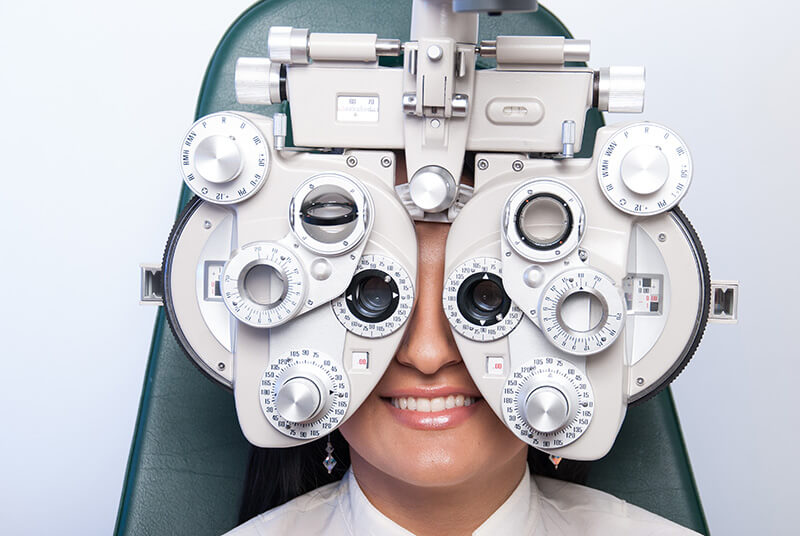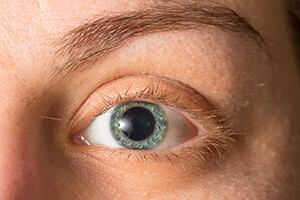Why are Eye Exams Important?
Regardless of your age or physical health, it’s important to have regular eye exams. During a complete eye exam, your doctor will not only determine your prescription for eyeglasses or contact lenses, but will also check for common eye diseases, assess how your eyes work together as a team, and evaluate your eyes as an indicator of your overall health.
Who Should Get Their Eyes Examined?
Eye exams are an important part of health maintenance for everyone. Adults should have their eyes tested to keep their prescriptions current and to check for early signs of eye disease. For children, eye exams can play an important role in normal development.
Vision is closely linked to the learning process. Children who have trouble seeing or interpreting what they see will often have trouble with their schoolwork.
Many times, children will not complain of vision problems simply because they don’t know what “normal” vision looks like. If your child performs poorly at school or exhibits a reading or learning problem, be sure to schedule an eye exam to rule out an underlying visual cause.
What’s the Difference Between a Vision Screening and a Complete Eye Exam?
Vision screenings are general eye tests that are meant to help identify people who are at risk for vision problems. Screenings include brief vision tests performed by a school nurse, pediatrician, or volunteers. The eye test you take when you get your driver’s license renewed is another example of a vision screening.

A good vision screening can indicate that you need to get an eye exam, but it can also miss significant problems. A vision screen does not serve as a substitute for a comprehensive eye exam.
A comprehensive eye exam involves careful testing of all aspects of your vision, checking the pressure inside the eyes, as well as checking the optic nerve and retina after dilation.
What is the Eye Doctor Checking For?
In addition to evaluating whether you have nearsightedness, farsightedness, or astigmatism, the doctor will check for eye diseases and other problems that could lead to vision loss. Here are some examples of the conditions that your eye doctor will be looking for:
- Amblyopia: This occurs when the eyes are misaligned or when one eye has a much different prescription than the other. The brain will “shut off” the image from the turned or blurry eye. If left untreated, amblyopia can stunt the visual development of the affected eye, resulting in permanent vision impairment. Amblyopia is often treated by patching the stronger eye for periods of time.
- Strabismus: Strabismus is defined as crossed or turned eyes. Your eye doctor will check your eyes’ alignment to be sure that they are working together. Strabismus causes problems with depth perception and can lead to amblyopia.
- Glaucoma: Glaucoma is a silent disease, having no symptoms at all. It can occur with higher frequency over the age of 45. Anyone over 40 should have yearly eye exams for glaucoma.
- Other Eye Diseases: Many eye diseases, such as cataracts and diabetic eye disease, have no obvious symptoms in their early stages. Your eye doctor will check the health of your eyes inside and out for signs of early problems. In most cases, early detection and treatment of eye diseases can help reduce your risk for permanent vision loss.
- Other Diseases: Your eye doctor can detect early signs of some systemic conditions and diseases by looking at your eye’s blood vessels, retina, and so forth. They may be able to tell you if you are developing high blood pressure, high cholesterol, or other problems. For example, diabetes can cause small blood vessel leaks or bleed in the eye, as well as swelling of the macula (the most sensitive part of the retina), which can lead to vision loss. It’s estimated that one-third of Americans who have diabetes don’t know it. Your eye doctor may detect the disease before your primary care physician does, especially if you’re overdue for a physical.
Is Dilation Necessary?
 During an eye exam, your doctor uses special eye drops to cause eye dilation. The drops cause the black portion at the center of your eye (pupil) to widen, allowing your doctor a good view of the back of your eye. Eye dilation can help your doctor diagnose many diseases and conditions, such as:
During an eye exam, your doctor uses special eye drops to cause eye dilation. The drops cause the black portion at the center of your eye (pupil) to widen, allowing your doctor a good view of the back of your eye. Eye dilation can help your doctor diagnose many diseases and conditions, such as:
- Diabetes
- Eye tumors
- High blood pressure
- Infectious diseases
- Macular degeneration
- Retinal detachment
- Glaucoma
Dilation also helps to paralyze the focusing mechanism inside the eye to aid in checking children for a glasses prescription. Without dilation, the glasses prescription may not be as accurate.
Dilation of the pupils always wears off but can take up to several hours and even a day. It will depend on the strength of the drop used and the color of your eyes. Be sure to bring good sunglasses with you.













